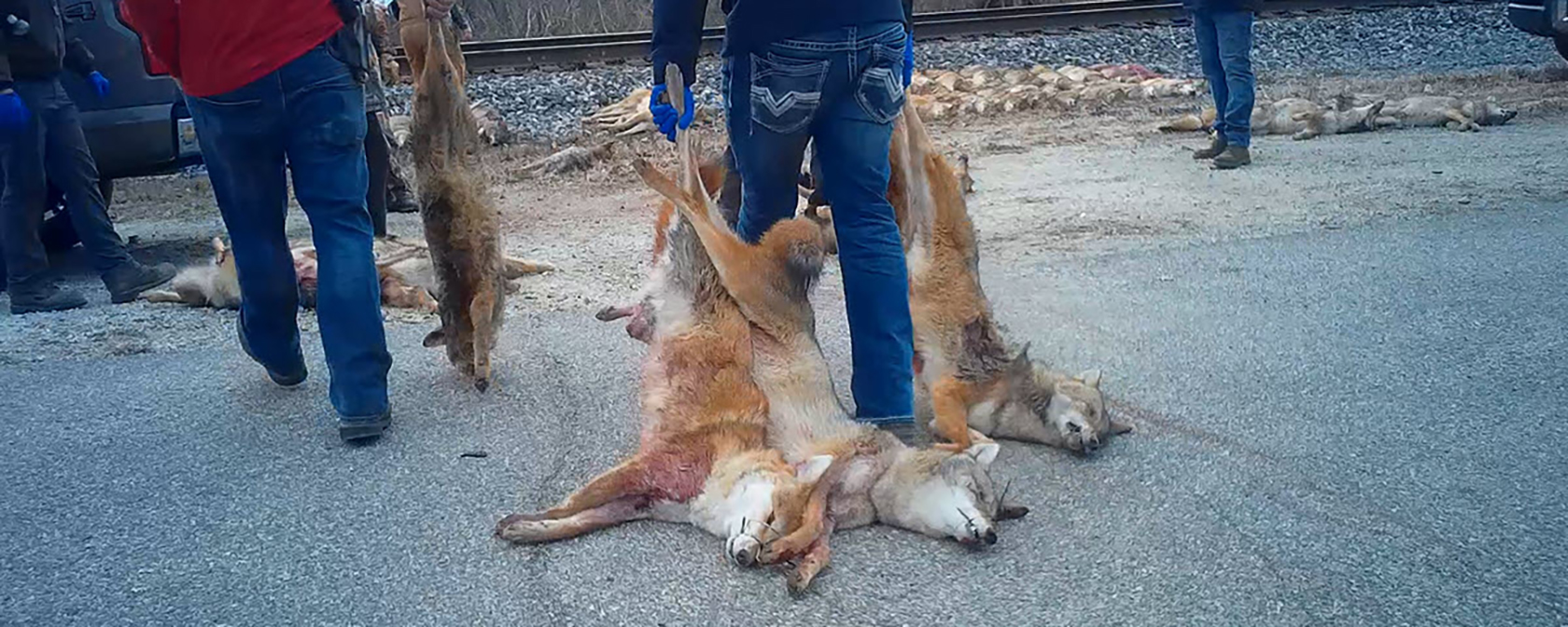[ad_1]
By Sara Amundson and Kitty Block
The Humane Society of the United States’ blog recently covered the benefits of reducing the consumption of animal products both for farmed animals and for the climate. But there are many other potential beneficiaries of a revamping of how animals are bred and farmed in various contexts, from ranches to fur farms. Here are some of the wild animals who suffer because of animal agriculture:
Wolves
In the U.S., the attack on wolves stretches back to the very first European colonizers, who arrived with their farmed animals in tow. Gray wolves used to roam across North America, living alongside deer, elk, moose and many other prey species. But the colonizers began an extermination campaign to eradicate them, driven by state-sponsored bounties that awarded cash for their kills. Wolves were systematically shot, trapped and poisoned until, by the mid-1900s, in all the lower 48 states, only a few packs remained in a small part of Minnesota.
Thankfully, through continued advocacy for a strong Endangered Species Act, gray wolves have slowly begun returning to the Great Lakes, Pacific Northwest and Northern Rocky Mountain regions, though not without setbacks. They are also currently being restored to Colorado, following the passage of Proposition 114 by voters in 2020. Mexican gray wolves are precariously making progress in Arizona and New Mexico, as are red wolves in North Carolina.
Some ranchers and farmers have modernized their operations, recognizing that there are highly effective, nonlethal tools and methods to prevent conflicts with wolves. But many more still engage in cruel and outdated lethal control practices, and even team with powerful trophy hunting interest groups to lobby for recreational hunting and trapping to remove even more wolves from the landscape. The fight to ensure a future in which wolves are protected is far from over.
Bobcats, bears, mountain lions and other native species
In addition to wolves, other native species such as black bears, grizzly bears, mountain lions, coyotes, foxes and many more suffer from government-led and taxpayer-funded lethal predator control programs at the behest of cattle and sheep ranchers.
A program under the U.S. Department of Agriculture called Wildlife Services slaughters millions of wild animals each year through indiscriminate poisons, painful traps and snares, packs of trailing hounds and even shooting from helicopters and airplanes. This practice is neither economically feasible nor truly beneficial; even the U.S. Government Accountability Office found “no independent studies that rigorously assessed the costs and benefits of the Wildlife Services program.” The predator control program also has many detractors among conservation biologists.
Meanwhile, community-led killings persist in the form of wildlife killing contests, during which participants compete to kill hundreds of coyotes, foxes and other wild animals for cash, prizes and bragging rights. Participants in killing contests often justify their killing sprees by claiming they are doing a service to farmers and ranchers by eliminating animals who would prey on cows and sheep—but that contradicts the “gold standard” science in wildlife management. Killing contests can even cause livestock losses to rise. According to a recent review of USDA data, there is a “paradoxical relationship” between lethal control of carnivores and the number of livestock killed. Fortunately, 10 U.S. states have now banned this grisly and destructive practice, and we expect many more to follow suit in the coming months and years.
Foxes, mink and raccoon dogs
Factory farming extends beyond the meat, egg and dairy industries. In fur factory farms, large numbers of wild animals, including foxes, mink and raccoon dogs, are bred and kept in small cages, forced to survive in deplorable conditions with little to no veterinary care, only to be killed for their fur.
These facilities are breeding grounds for disease. We’ve seen this with the COVID-19 outbreak, which spread like wildfire across hundreds of fur farms in multiple countries, including the U.S., and was transmitted from fur-farmed mink to humans. And now, highly pathogenic avian influenza, known as HPAI, has been detected on more than 70 fur farms in Europe, resulting in orders to kill more than 500,000 animals on public health grounds. It has also been detected in multiple U.S. states, including in wildlife. Federal and state authorities have yet to require testing of U.S. fur farms for HPAI, even though diseases such as COVID-19 and HPAI can be asymptomatic and left to fester and mutate into new, more harmful strains.
Indeed, there are few laws that regulate fur factory farms or require monitoring for infectious diseases. Policymakers in the U.S. and around the world are finally starting to acknowledge the need to shut down this industry once and for all.
Changing cruel and broken systems
When we talk about our vision of a humane world, we are deeply aware that eradicating animal cruelty on a massive scale isn’t easy, which is why we take a multipronged approach to reshaping or eliminating the industries that perpetuate cruelty.
Our Wildlife team advocates for the passage of strong legislation to protect imperiled species and outlaw wildlife killing contests, while also working with local wildlife agencies to prevent lethal “solutions” to wildlife conflict before they happen and working with fashion retailers to go fur-free. Our Farm Animal Protection team works to decrease the suffering of animals already on factory farms, while also working with large food service suppliers to increase their offerings of plant-based cuisine and decrease demand on the meat, egg and dairy industries.
Systems that still thrive on animal cruelty—whether they impact animals bred and raised to suffer or those who merely get in the way—have no place in the humane world we’re trying to create.
Kitty Block is CEO of the Humane Society of the United States.
[ad_2]
